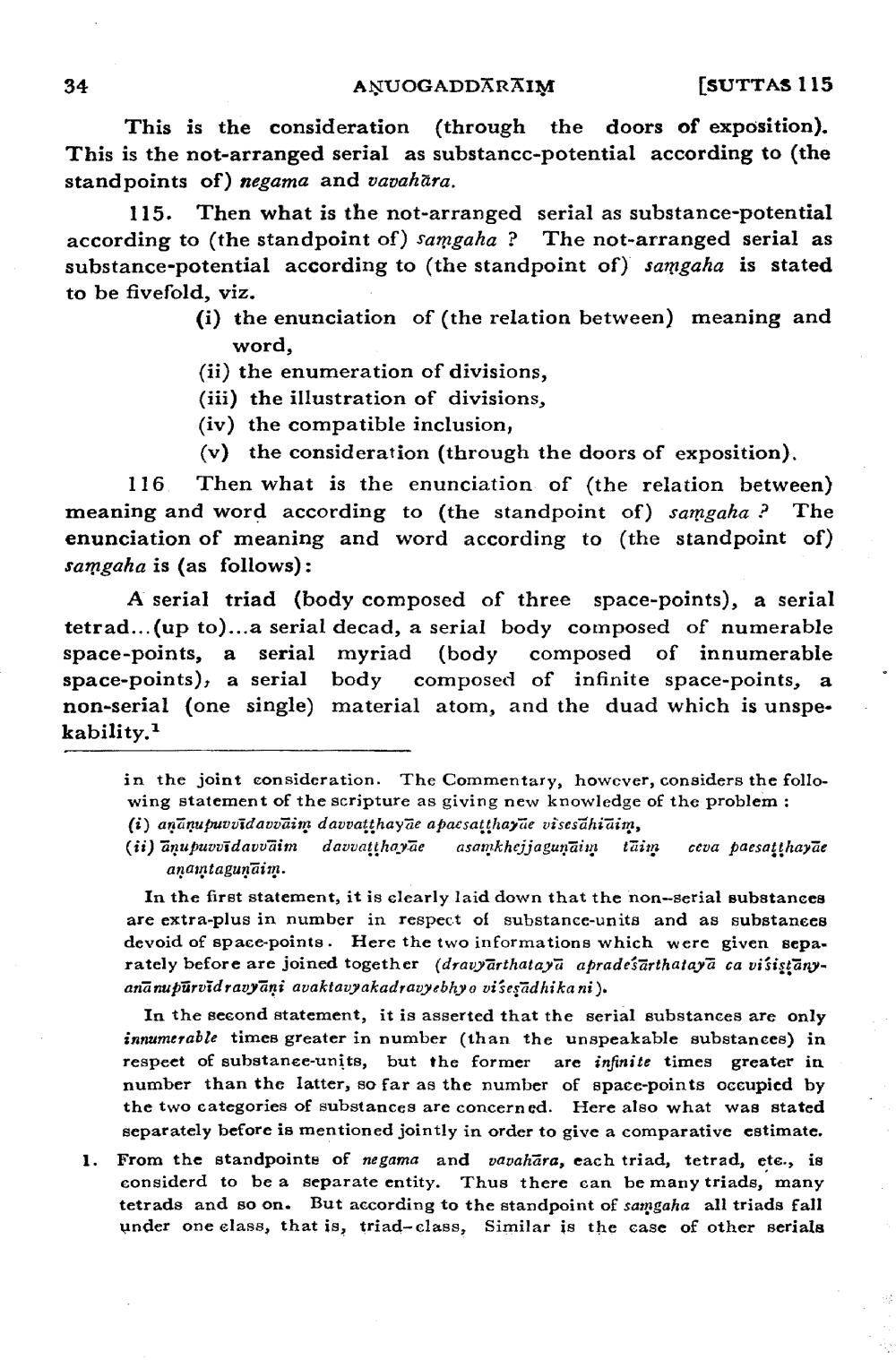________________
34 AŅUOGADDĀRĀIM
[SUTTAS 115 This is the consideration (through the doors of exposition). This is the not-arranged serial as substancc-potential according to (the standpoints of) negama and vavahāra.
115. Then what is the not-arranged serial as substance-potential according to the standpoint of) samgaha ? The not-arranged serial as substance-potential according to (the standpoint of) samgaha is stated to be fivefold, viz.
(i) the enunciation of the relation between) meaning and
word, (ii) the enumeration of divisions, (iii) the illustration of divisions, (iv) the compatible inclusion,
(v) the consideration (through the doors of exposition). 116 Then what is the enunciation of the relation between) meaning and word according to the standpoint of) samgaha ? The enunciation of meaning and word according to (the standpoint of) samgaha is (as follows):
A serial triad (body composed of three space-points), a serial tetrad...(up to)...a serial decad, a serial body composed of numerable space-points, a serial myriad (body composed of innumerable space-points), a serial body composed of infinite space-points, a non-serial (one single) material atom, and the duad which is unspe. kability. 1
.
in the joint consideration. The Commentary, however, considers the following statement of the scripture as giving new knowledge of the problem : (i) aņāņu puvvidavvāim davvatthayāe a paesatthayāe visesähiaim, (ii) ānupuvvīdavvāim davvatthayāe asamkhejjagunāim tāim ceva paesatthayāe
anamtaguņāim. In the first statement, it is clearly laid down that the non--serial substances are extra-plus in number in respect of substance-units and as substances devoid of space-points. Here the two informations which were given sepa. rately before are joined together (dravyārthatayā apradeśārthatayā ca visistānyanānupūrvid ravyāni avaktavyakadravyebhyo višeşādhika ni).
In the second statement, it is asserted that the serial substances are only innumerable times greater in number (than the unspeakable substances) in respeet of substance-units, but the former are infinite times greater in number than the latter, so far as the number of space-points occupicd by the two categories of substances are concerned. Here also what was stated separately before is mentioned jointly in order to give a comparative estimate. From the standpoints of negama and vavahāra, each triad, tetrad, ete., is considerd to be a separate entity. Thus there can be many triads, many tetrads and so on. But according to the standpoint of samgaha all triads fall under one elass, that is, triad-class, Similar is the case of other serials
1.




